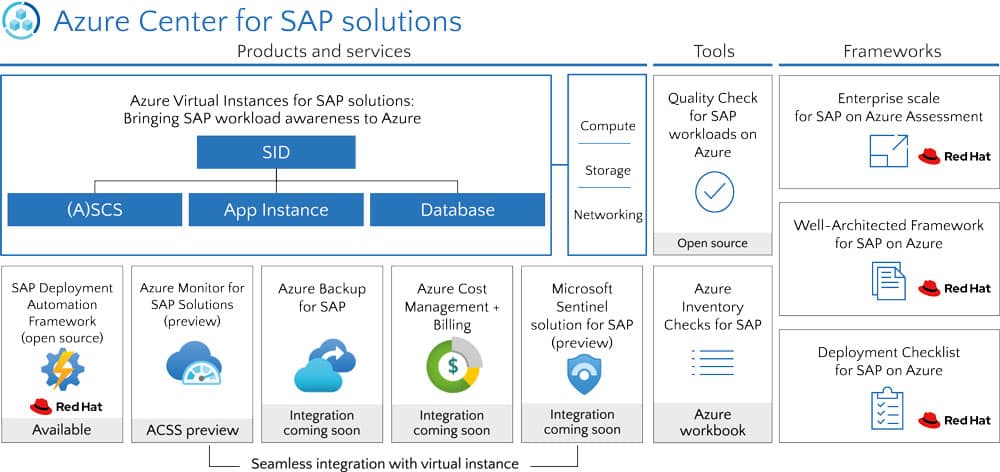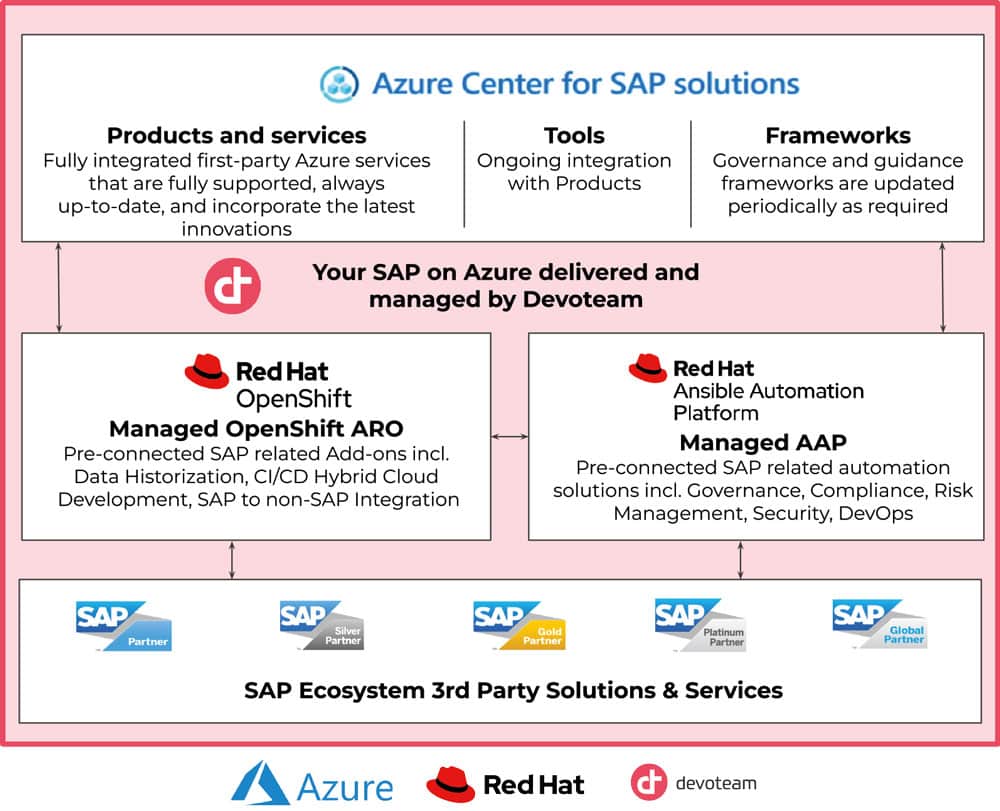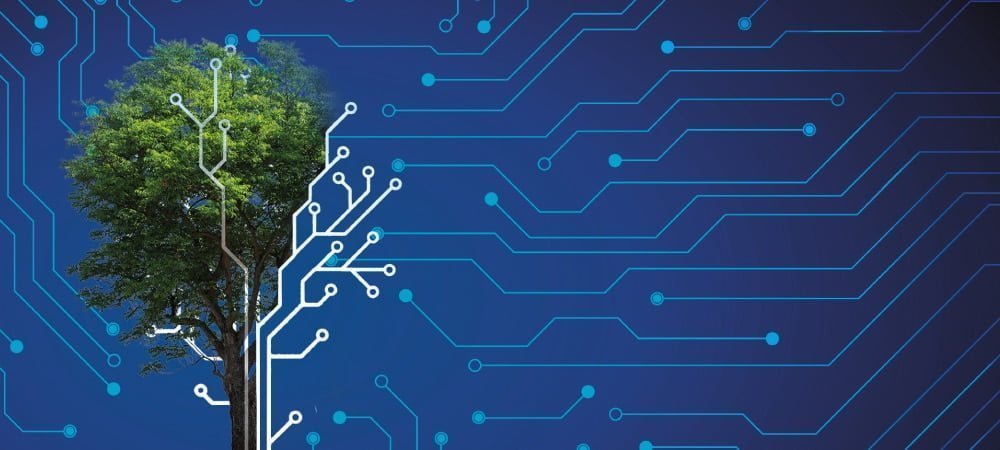The way out of chaos - how cloud and SAP ecosystems grow together


Access to a huge partner ecosystem
This is now simplifying significantly with a new combination of Microsoft Azure services and pre-connected solutions from Red Hat as the foundation for the entire SAP ecosystem and beyond.
Operating SAP in the cloud is now common practice, but still comes with numerous limitations. This is mainly because cloud providers have little insight into SAP landscapes and the role of the servers and instances running there. As a result, they can more or less only focus on the infrastructure and VMs and not help companies manage SAP. Companies have to take care of the operation, maintenance and management of the application, database and other servers themselves or hire a partner to do it. In addition, long-established cloud services for monitoring, security and cost control are left out and simply cannot be used in the SAP context.
One promising approach to improving this situation is the Azure Center for SAP Solutions (ACSS), which Microsoft introduced last fall. This is a modern operating environment for SAP in Azure that guides users through the deployment of SAP systems and automates many steps, including the configuration of the operating system, database and security. Alternatively, users can also use their existing tools or move a ready-made environment to the cloud and register it with ACSS. ACSS then creates a Virtual Instance for SAP Solutions (VIS) that is "SAP aware" and contains the metadata of the entire SAP system.

And that is exactly what makes it special: Ultimately, ACSS understands the SAP landscape and monitors the status and integrity of all systems. Users can thus dispense with separate monitoring solutions. They can easily start and stop SAP systems at the push of a button and will soon be able to use services that were previously only available at the infrastructure level. These include a special Azure Backup for SAP, Azure Cost Management + Billing to help optimize costs, and Microsoft Sentinel Threat Intelligence.
A common foundation
Microsoft has designed Azure Center for SAP Solutions as a modular and open framework that users and partners can extend and connect with other solutions. It relies on the SAP Deployment Automation Framework (SDAF) developed jointly with Red Hat. In addition, Red Hat OpenShift and Red Hat Ansible Automation Platform have already been integrated in collaboration with Red Hat - two products that are used by many companies, even outside the SAP world. While OpenShift provides a complete enterprise Kubernetes platform for running and developing cloud-native applications, Ansible is the basis for end-to-end workflow automation in both SAP and other domains. Both are available fully managed in Azure and "pre-connected" to the SAP landscape in ACSS if desired.
Because OpenShift and Ansible behave the same across all infrastructures, enterprises and SAP ecosystem partners get a unified foundation for developing modern, cloud-native applications and running third-party solutions that extends from the cloud to on-premises data centers and connects the SAP world with other application landscapes. Companies can take a fully hybrid cloud approach without having to do parallel development for different environments each time. The operation of complementary silos is no longer necessary and SAP fits perfectly into the automation strategy, unlike before. Complex workflows can also be implemented in SAP and beyond. In this way, Ansible playbooks for infrastructure provisioning can be linked with playbooks for application deployment and IT security.

The efficient and highly automated workflows free up many resources in the company for the development of innovation. At the same time, Open Shift and Ansible support this through a kind of "instant PoC": Without long project lead times and the time-consuming provisioning or procurement of resources, companies and SAP partners can set up a new environment to try things out quickly or deploy new applications quickly. A whole new, agile way of using SAP in the cloud is emerging.
Access to a huge partner ecosystem
In addition, this combination opens up for SAP users in the cloud the large ecosystem of solutions, add-ons and concepts that partners from Microsoft, Red Hat or SAP have built up in recent years on the basis of OpenShift and Ansible. Partners, in turn, can use the unified foundation to support companies running SAP in the cloud above the infrastructure level, for example with self services, compliance, data management or test automation.
An example of this is provided by Devoteam, which has developed solutions for governance, risk and compliance (GRC) precisely for this new combination of Microsoft and Red Hat products. After all, many activities and transactions in SAP and surrounding systems are subject to regulatory requirements, and capturing and documenting these activities and transactions typically creates a lot of manual effort. A recent example is the Supply Chain Duty of Care Act (LkSG), which can be implemented more quickly by automating and connecting various data sources and external information. Devoteam solutions can be used to automate these processes. They are delivered as Ansible Content Collection, Ansible Certified Content and OpenShift Certified Applications that are tested, verified and ready to run anywhere.
The content and collections can be combined with other modules, including those from other partners, creating a huge construction kit that simplifies the SAP world and makes it part of a modern hybrid cloud infrastructure. In the future, new use cases or regulatory requirements can be implemented much faster than before through automations and the connection of various internal and external data sources.





